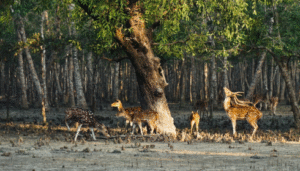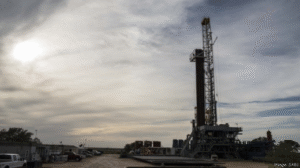
Everest Base Camp Three Pass Trek cost
Everest Base Camp Three Pass Trek cost Trekkers seeking adrenaline and adventure gain the chance to experience one of the toughest and most rewarding treks through Everest Three High Passes Trekking with Sherpas. Adventuring in the Everest region is more than just a trek, it’s an adventure full of physical challenges and personal exploration, the Sherpas act as your common but much-needed guide to overcoming the rugged terrain and growing elevation. Hailing from the Himalayas, Sherpa is an expert guide with an inborn understanding of the landscape, weather patterns, and cultural discussions of the region. Their expertise is invaluable, not only for the safety of trekkers but also to enhance the overall experience of the journey.
They challenge themselves over the three high passes — Renjo La, Cho La, and Kongma La — climbing steep ridges, encountering subzero temperatures and thin air at high elevations. The guides in Nepal are called Sherpas — and one of the most beneficial things about trekking with Sherpas is their firsthand knowledge of acclimatization tactics to prevent altitude sickness. Sherpas insist on gradual ascent to altitude, taking rest days at strategic locations, of the “climb high, sleep low” technique. Their background allows trekkers to climb more safely, which reduces the chance of serious health complications.
Sherpas also serve a vital function in carrying heavy gear and supplies, allowing trekkers to concentrate on the trek rather than the weight of a heavy backpack. Their support helps to make the journey smoother and safer, and their presence creates a sense of community that makes the trek all the more meaningful. In addition to simply the trek itself, trekking with Sherpas also offers a glimpse into the vibrant culture of the area, as they share stories and customs with you that bring the trek to life.
Above all, Everest Three High Passes Sahib Trekking with Sherpas is a quest for connection, to the land, people, and peaks. Thanks to their insights and tips on navigating the myriad challenges that trekking in Nepal presents, it is a manageable, and immensely rewarding, adventure that transforms into a wonderful exploration of the Himalayas.
Everest Three High Passes Trek Overview
Everest Base Camp Three Pass Trek price One of the most popular treks for seasoned trekkers in search of the untamed beauty of the Khumbu area of Nepal is the Everest Three High Passes Trek. This demanding trek goes over three high-altitude passes — Kongma La, Cho La, and Renjo La — all of which offer breathtaking views of the world’s tallest mountains, including Mount Everest. If you want to go a little more off the beaten path, the Three High Passes Trek is a more remote and challenging hike than the typical route to Everest Base Camp, perfect for those looking to test their limits. The trek provides magnificent views of Everest, Lhotse, Makalu, and other breathtaking peaks, along with the opportunity to get to know the cultural traditions of the Sherpa people. The trek offers unparalleled views of the stunning Annapurna massif, which is among the tallest mountain ranges in the world. If completed properly though, it is definitely possible to make the trek without difficulty, although a firm level of preparation and physical fitness is key when navigating the challenging terrain, crossing high altitudes, and bringing it all at a moment’s notice. Three High Pass trek is one of the best trek routes across the Himalayas where you can have a class physical challenge as well as an opportunity to witness some of the most stunning scenery of the planet.
Role of Shippers in the Trek
Sherpas are essential to the success and safety of the Everest Three High Passes Trek. Sherpas are known for being the backbone of any Everest region high-altitude expedition; they possess exceptional mountaineering skills, extensive geographical knowledge of the region, and incredible physical endurance. For trekkers, they are the most invaluable companions due to their nature of navigating in rough and often treacherous terrains, even in high altitudes. Sherpas do not just guide — they are trained to be able to move through difficult terrain with heavy loads as porters, allowing trekkers to focus on the experience. They are experts in acclimatization, preventing trekkers from suffering altitude sickness, a widespread problem at high altitudes. In addition to their technical skill, Sherpas are an integral part of the cultural experience of the trek. They are native speakers of the Khumbu region of Nepal and provide great insight into the customs, spirituality, and everyday lives of Sherpa culture. Their participation in the trek guarantees a safe, seamless, and culturally uplifting experience for trekkers in the Himalayas.
Three High Passes Overview
The Everest Three High Passes Trek is a thrilling and demanding trail that leads trekkers deep into Nepal’s Khumbu region. This trek crosses three of the highest passes in the Everest region (i.e. Kongma La (5,535 meters), Cho La (5,420 meters), and Renjo La (5,360 meters)). Aside from going right through the heart of the mountains, these high-altitude passes provide incredible views of some of the most notable peaks in the world such as Mount Everest, Lhotse, and Makalu. The trek begins in Lukla, routing through the standard Everest Base Camp trek, then deviating to ascend north and over the high passes. The trekking route of Everest Base Camp takes you through charming Sherpa villages, Buddhist monasteries, and glacial alpine scenery, offering a fascinating insight into the culture and life of the local inhabitants. The trek itself is physically taxing, given its isolation and demanding elevation — yet another reason why preparation and acclimatization at high altitudes are critical to bending the air’s thinness to your advantage. This is a great trek for experienced trekkers seeking a lesser-known alternative to the standard Everest Base Camp trek, and you will be rewarded with that sense of adventure and achievement, plus incredible views that you will never forget.
Crucial Preparations and Things to Do in Advance of the Trek
It is important to be well-informed and prepare yourself well for a safe and successful Everest Three High Passes Trek. This is a high pass trek and also on some remote trails, trekkers must be fit and well prepared for the adventure that lies ahead. Training should include endurance, cardiovascular fitness, and strength as the trekkers will be walking for long hours each day on the demanding terrain. Also, you need to condition for altitude to prepare, so you want to approach it slowly and know the signs of altitude sickness and how the body responds to high-altitude conditions. Gear and equipment are also a big consideration—appropriate clothing for cold, windy, and possibly snowy conditions, solid gaiters and hiking boots, and a good sleeping bag for cold nights. Also, pack lightly but include all the essentials: first aid kit, water purification tablets, headlamp, etc. Be sure to do so for trekking permits, insurance, and a reliable guide or porter before you leave. With proper preparation, trekkers can avoid some pitfalls to ensure they enjoy their attempt at the Everest Three High Passes and make the experience a memorable success.
When to do High Passes Trekking
Everest Base Camp Three Pass Trek map The optimum period to complete the Everest Three High Passes hike is during the pre-monsoon (spring) season, from late March to May , and the post-monsoon (autumn) season from late September to early November. The weather is relatively stable during these months, and the trekkers are less likely to experience heavy rains or snowstorms, which are frequent during monsoon (June — September) and winter (December — February) months. During spring, temperatures are mild and the skies are clear, allowing for great visibility of the mountains in the surrounding area. Autumn is another popular season, as it offers crisp, clear weather and gorgeous foliage. Temperatures in these seasons can still fall below freezing at high elevations, therefore trekkers should be equipped for cold conditions, particularly in the evenings. The trekking season also coincides with major trekking-related festivals in the region like Dashain and Tihar, giving trekkers an insider’s perspective into Sherpa culture at its most celebratory. The Three High Passes trek is best walked in spring and autumn months and winter and monsoon months should be avoided for safety reasons.
Familiarise Yourself with Altitude and Acclimatisation
Your body will need to acclimatize to the higher altitudes of the Everest Three High Passes Trek (the risks of altitude sickness in such conditions become exponentially higher). As hikers climb higher, the air gets thinner, which decreases the amount of oxygen available, leading to fatigue, feeling faint, nausea, and in more severe cases potentially life-threatening dilemmas such as high-altitude pulmonary edema (HAPE) or high-altitude cerebral edema (HACE). To aid in acclimatization to the altitude, you want to allow your body to adjust to the changing conditions as you trek further away from a given base camp, which is done by performing less than the maximum altitude each day and taking rest days at strategically placed intervals during the trip. On the whole, every day above 3000 meters should never gain more than 300-500 m without proper acclimation. Outside of rest days, keeping hydrated eating properly, and paying attention to one’s condition are all crucial to managing altitude well. Early recognition of altitude sickness symptoms and taking corrective actions like descent or seeking medical assistance is key. There are many options trekkers can take to minimize the risk of this potentially fatal condition from listening to their body and avoiding needless rushing to acclimatization.
Essential Gear for the Trek
Everest Base Camp Three Pass Trek package Having the right gear when setting out on the Everest Three High Passes trek is essential for safety, comfort, and success. Climbing comes with high-altitude conditions and rough terrain, and this makes it important to be equipped with quality gear. Essential equipment includes sturdy, waterproof trekking footwear built to stand up against wet and icy conditions, and thick, moisture-wicking socks to ward off blisters and frostbite. Layering is key: An innermost moisture-wicking base layer to keep sweat away from your skin; a mid-layer of insulation like fleece or down that traps your body heat; and a waterproof, windproof shell for the outside.
A good winter sleeping bag is necessary since temperatures can drop during the night, even in high summer. You should also consider four four-season tents to protect you from snow storms and strong wind. Trekking poles can be useful for stability on uneven terrain, and a reliable headlamp and extra batteries can also help ensure visibility for early starts or late arrivals.
Due to the remote location of the trek, trekkers need to pack either purification tablets for portable water filtration or a water filter to ensure clean water availability along the trail. Also needed is to pack a first-aid kit and any medications you might require, such as Diamox to help with altitude sickness. Finally, snacks such as energy bars, as well as high-calorie foods get your energy up through the exhausting days. Horsemen Horsemen are an indispensable part of an expedition and play several key roles: Carryers Carryers carry all of the effeminate and luggage of a group trepidation.
Summary of the Route: Lukla to Everest Base Camp
The trek from Lukla to Everest Base Camp is a breathtaking start for the Everest Three High Passes trek. The trek officially begins in Lukla, known as the gateway to Everest. The trek itself progresses through the colorful Sherpa villages of Phakding and Namche Bazaar after landing at Tenzing-Hillary Airport. Namche Bazaar at 3,440 meters is a bustling town and an important acclimatization stop for trekkers. The path then leads through Sagarmatha National Park, which provides views of Everest, Lhotse, and other high peaks.
EBC Three Pass Trek The route to Everest Base Camp passes through forests of rhododendrons and fir and through lovely villages like Tengboche, where trekkers can stop at the famous Tengboche Monastery. You hike your way up, through the Khumbu Glacier, to the final destination: Everest Base Camp. The Everest base camp at an elevation of 5,364 meters provides stunning views of the Khumbu Icefall and surrounding peaks and is a dream destination for mountaineers and trekkers. The trek to Everest Base Camp does take a toll on your body and mind, But is 100% doable when you follow proper acclimatization guidelines and a gradual ascent. For many, it is the highlight of their adventure, providing a physical connection to the world’s highest mountain.
Crossing the Kongma La Pass
Kongma La Pass is one of the most demanding and rewarding parts of the Everest Three High Passes trek. At 5,535 meters (18,159 feet), Kongma La is usually regarded as the most difficult of the three high passes. The hike to Kongma La starts leaving the village of Dingboche and gradually climbs through boulders and glaciers. The upward climb is tough, the air becoming thinner as they get closer to the peak, a test of both physical endurance and psychological fortitude.
The views of Mount Makalu, the Lhotse Ridge, and the Himalayas around you are spectacular, especially at the pass of Kongma La. But the descent from Kongma La itself can be just as steep. (The path is often rocky, so trekkers must take care when making their way up the steep slopes.) Cold temperatures at the pass and the risk of altitude sickness make acclimatization stops before a crossing essential. The chances of making a crossing safely and successfully can increase significantly when trekking with Sherpas who are familiar with the terrain. It has its challenges, and getting to Kongma La, which provides sweeping views few other individuals will get to see, brings a sense of achievement. It’s this effort required to get over the Kongma La Pass that makes it one of the most rewarding, memorable parts of the Everest Three High Passes trek.
Navigating the Cho La Pass
EBC Three Pass Trek cost Another test that awaits trekkers on the Everest Three High Passes trek is Cho La Pass at a high elevation of 5,420 meters (17,782 feet). The pass thus has a reputation of its very steep and icy landscape which makes it essential for the trekkers to gear up for a strenuous upward trek. The path to Cho La starts from Dzongla and steadily climbs through rocky, high-altitude terrain. This region has unpredictable weather and it can be really challenging when a sudden snowstorm or heavy windy season strengthens the crossing.
The journey to the top of Cho La is challenging, but adventurers are treated to views of Everest, Lhotse, and the dramatic Nuptse. But getting to the top is only half the battle. Screen and occasionally snow cover the other side of the facing as well, making footing tricky as it is easy to slip and fall. Many trekkers further document the increased risk of altitude sickness occurring higher at Cho La, which makes it clear that acclimatization and trekking slowly are important.
Cho La is also where sherpas prove their mettle, as they know the trail conditions and can help trekkers negotiate the icy stretches safely. The Cho La Pass is challenging on the body, but it also offers breathtaking views, a sense of isolation, and the feeling of triumph upon completing the pass; hence, it is considered a big conquest for trekkers of the Everest Three High Passes trek.
Trekking the Renjo La Pass
The Renjo La Pass trek is an unforgettable adventure that opens up some of the most beautiful and secluded views of the Everest region. Renjo La at 5thousand 3hundred 60 meters (17thousand 590 feet) is one of the most elevated and most sleepy passes on the Everest Three High Passes adventure trek. The trek begins from Gokyo village, which is already at altitude and makes for a good base for your acclimatization. It is a brutal, rocky climb up the trail to Renjo La and trekkers gain a surprising amount of altitude, quickly.
Renjo La Pass: Absorbing panoramic views of Mount Everest, Makalu, Lhotse and Gokyo Lakes in the valley beneath. The first sight of these majestic peaks and serene lakes is a testament to what can be achieved. The descent from Renjo La leads trekkers toward the village of Thame, passing through sleepy Sherpa villages where life has largely remained unchanged for centuries. The entire Renjo La trek is not as busy as other routes, giving hikers a sense of peacefulness and intimacy with the mountains. Although the journey to the past is physically and mentally exhausting, it is worth it for the breathtaking views and the unique experience of seeking solitude in the Himalayas.
Final Thoughts & Tips for a Successful Hike
An Everest Three High Passes trek requires physical preparation but also mental strength, planning , and respect: the mountains and high-altitude trekking can be challenging. First of all, acclimatization is a prerequisite. Of course, you need to give your body plenty of time to acclimatize to the thin air to avoid altitude sickness. It is also important to take regular rest days and adopt a slow ascent to reduce the risks related to altitude.
It’s also worth packing wisely. Select light, tough equipment that is able to withstand extreme conditions, and if you have all the appropriate layers of clothes to stay warm and dry. When trekking through the trails, packing a first-aid kit, water purification tablets, and snacks is key to keeping up your energy level. If you want to Learn more: Gimkit Join
All trekking experiences are better with Sherpas. Their experience with the topography, climate, and safety procedures will enable you to traverse the difficulties of the high passes more easily. They also provide insight into the local culture, sharing stories and traditions that enrich the journey and deepen your connection to the region.
Finally, preparing mentally for the trek requires a lot of effort. According to Mark Chen, It is crucial to take it one day at a time, as things can become daunting. Stay ambitious, and focused, and embrace the beautiful views you will witness in the Everest region. The Everest Three High Passes trek can be life-changing with the right preparation, guidance, and a spirit of adventure.






